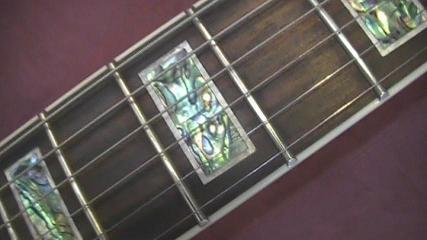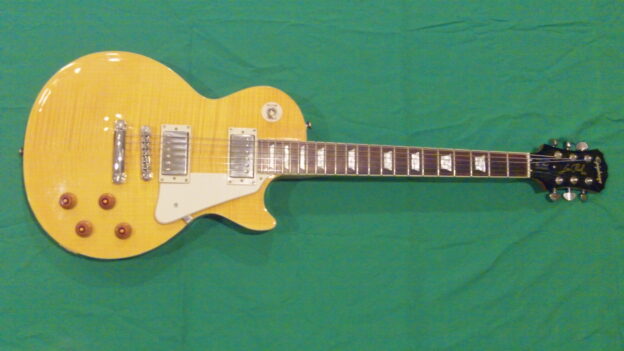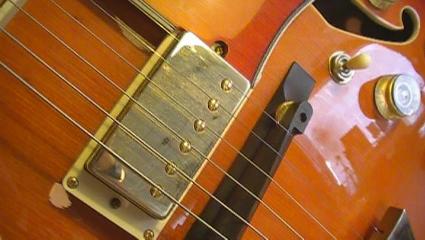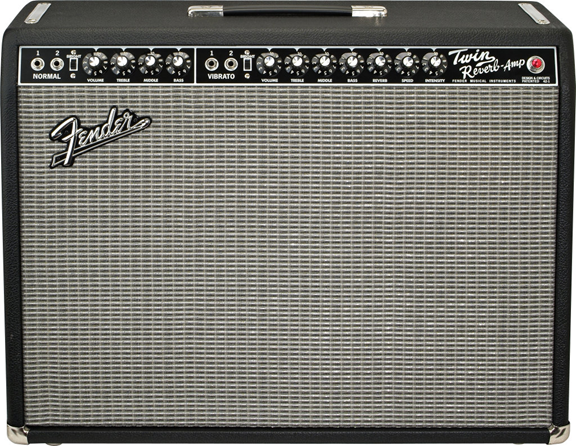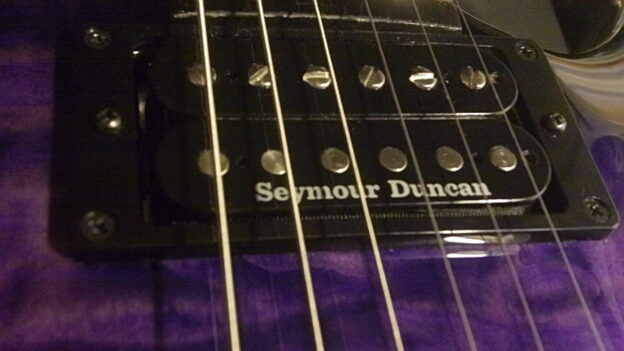By PMI Guitar Instructor Chad Crawford
In part I of this two-part series we considered some generalities of how an aspiring musician’s overall attitudes about work and people affect musical accomplishment. In this part we will consider how attitude more specifically affects the technical details of cultivating music skills.
Review from Part I … (hint – I am reviewing this section because it is very important! Scroll down to view Part I)
The Singular Importance of Attitude
Probably the single most important thing I have learned in my decades of musical endeavor is that music is not just about technical matters pertaining to managing the fingers or voice effectively. Rather, it is mostly a matter of cultivating the mind, and that means among other things that a person’s overall attitude about life, work, and people is going to have a great deal of impact on his or her accomplishment as a musician. As with any “rule” there will certainly be notable exceptions, but they will be notable because they are exceptions. Mastery of things technical is certainly very important, but the foundation of it all is mental attitude. Can I help you? Well … it depends very much on your attitude. That terminology is often used in a way to imply contempt, as in “He has an attitude!” That’s not the way I am using it here. I don’t say it with any kind of judgmental intent. It is just an objective fact. Let’s clarify by considering some examples of how attitude effects musical results.
Now, on to Part II proper …
Give Me the Giggles! – I haveobserved many instances, particularly with kids and their parents, ofmusic students or prospects who approach learning music purely as entertainment, similar to sports. Professional athletes must of course work hard for many years to achieve a world class level of performance. However, much of the fun of sports for kids is simply running around excitedly on a field or court. A coach can train a kid in the basic rudiments of a sport within minutes and the kids can begin to enjoy the fundamental physical activity of the sport immediately, even if they are actually comically terrible at it in the beginning.
This is not so with music. While making music can and should ultimately be a very satisfying experience, reaching this level of musicianship is a process more along the lines of learning math, science, or language. No one expects to start a science class and be a functioning research scientist before completing the first class. For whatever reason, many people who have an interest in music lessons, and this is the worst with guitar in particular, seem to have some idea that it is something along the lines of an alternative to sports or watching TV, something that is purely a form of entertainment. I suppose this has something to do with so much of the advertising for guitar training that appeals to the quick fix – click here, or come take my lessons, and you will be playing your favorite songs immediately!
Let me be clear here that I am not suggesting it isn’t possible to learn to play some great music without submitting to twelve years of education. That would be one extreme. I am addressing the other extreme, where the prospect or client feels that the whole process should be an experience similar to sports – giggles out of the gate, with the real work required only for the elite. Well, it isn’t. For a typical hobbyist level musician with a good work ethic and a good teacher, pursuing fluency in popular music styles, it is going to be a multi-year process to get to a point of functioning predictably and comfortably in a group playing setting such as a band or open jam session. Up until that point, it is going to be like school. Go to class. Do homework. Repeat. When you get through first grade, then you go to second grade. There is no way to jump from day one to diploma, or third grade to eighth grade. It is a process consisting of many small steps, and if anyone is telling you otherwise, be sure to keep an eye on your wallet until you get clear of them!
If you are looking for giggles out of the gate, I can’t help you. If, on the other hand, you are willing to approach learning music as an educational endeavor with great rewards on the far end of some work, then I can help you a great deal!
I Can’t! – Yes you can, if you are willing to persist in an informed approach to working at it. There is no “I can’t”. There is only, “I haven’t yet”. Students of guitar all experience the same struggles with finger control, comprehension, and confusing those two issues. For instance, chord changing exercises can be quite frustrating in the beginning, and many feel that they will never be able to accurately and rapidly place fingers in the correct location fast enough to keep up with the rhythm. This is simply an illusion, arising from unrealistic expectations. Fluent chord changing requires a well-developed muscle memory for each chord, and that means lots of repetition over time. It is a process, and the desired results are inevitable.
Similarly, when I introduce students to the concept of resolving solo phrases to target scale notes, it is universal for students to struggle with tracking the chord changes while also trying to remember finger placements. With the introduction of each new level of complexity as we move through alternate resolving notes and various positions along the fretboard, it is a recurring struggle to get one’s mind and hands around the ability to accurately place the right note at the right time. This does not mean anything is wrong or that you have no talent. It is just something that you have to work at until you have cultivated the totality of it into your thinking, and then it will work.
Let me share with you an example of a common experience I observe in teaching. I was once teaching a teenage a girl who was struggling with her chord changes. She came in for her lesson one week and went through the exercises. She kept fumbling the chords, but I knew she had been working with them long enough to get them right. So we kept going over them with me leading her through a series of steps to get her reservations out of the way and let her muscle memory take over. Toward the end of the class she started playing through the exercises smoothly, to her great amazement and delight. However, what I remember most is the look of surprised understanding on her face when I pointed out to her that she was already able to perform those exercises well when she walked in the door that day. The only thing that was preventing her from peak performance was that her mind was closed to the possibility that she could do them well, and so she had been unconsciously choosing to perform habitually sub-par chord changes in fulfillment of her expectations.
See how important attitude is? You can literally prevent yourself from doing something that you are in fact presently capable of doing, by convincing yourself that are not able to do it! This is what performance coaches mean when they speak of believing in yourself. It does not mean some kind of voodoo such that you can wishful think yourself into doing something that you can’t actually do. Rather, it means you choose to be confident in your potential to do a thing, and you cling to that belief tenaciously through the struggles of the building process until the work finally delivers the desired results. It is not magic. You still have to do the work. But you can do the work and still suffer less than desired results due to a self-defeating, “I Can’t!” attitude.
Besides talking yourself out of doing something that you can actually do, an “I can’t!” attitude will also give you an easy escape when faced with some work. It is an unfortunate fact that all of us human beings are inherently lazy, and we will jump on any excuse to avoid work. If you can convince yourself that you can’t, well then there is no point doing all that work, is there? I can’t, so I won’t try, and then I won’t be able, and that will prove that I couldn’t, and then I can watch TV and eat marshmallows instead. See how this works?
Are you inclined toward believing that lying internal voice that whispers, “I can’t!”? Well, if you do give in to that suggestion, then you will choose to make it so, and then I can’t help you. If you will instead choose to believe, “I can!” regardless of the struggles of the moment, then I can help you a great deal!
When Does it End! – I get all manner of people with all kinds of ideas about music coming to me for lessons. I conduct pre-enrollment consultations with all prospects for a number of reasons, one of which is to identify what they may be thinking in regards to how long it takes to learn music. The answer will vary a great deal depending on goals, but some folks have really unrealistic ideas such as a few weeks or a few months. I never let these folks enroll thinking it is going to be a few weeks or months. Some of them do not enroll, either because they think I don’t know what I am talking about, or else they are just not willing to commit a realistic amount of time to it.
Then I have prospects who enroll and get started. Some of them come in with a great attitude driven by a passion for music, and they stay enrolled for multiple years and become potent musicians. Others stay for a few weeks or months until they realize I wasn’t exaggerating about the commitment required, then they give up and quit. Unfortunately those folks are a lost cause before they even start, not because of their inherent potential but rather because of their attitude.
Then there is the mid-range group. They get off to a good start and make rapid progress, but then get bogged down somewhere between six months and a year. They may continue with lessons, but they get stuck at a certain level, often with learning improvisational soloing. This is where the weight of a self-defeating attitude begins to take its toll. They fall into a habitual routine of practicing the same mistakes over and over rather than truly applying intense focus to solving problems, and then they get stuck. It feels to them as if they have reached a limit they can’t pass, then they either resign themselves to current limits, or else give in to frustration and quit.
This is where attitude becomes the critical factor in success. When you reach that point where you feel you are stuck, you can do one of three things. Quit, keep doing what got you stuck, or do something different that delivers better results. I can tell you from much experience that the thing you need to do different is to focus more closely on the details of the specific problem you are having, rather than simply practicing the same mistake over and over and hoping it will resolve itself. I can also tell you from experience that many folks won’t do the extra work most of the time. They will instead either go on repeating the mistake or else give up.
When does it end? When you choose to focus intently on correcting the details, conquering the problem instead of letting it conquer you. If you choose to give up, or try to side-step the work necessary to succeed, then I can’t help you. If you love music enough to commit up front to working at it until you can do it well, then I can help you a great deal!
The Grass is Greener Over There! – Question: “When do I get to stop practicing all the time and just enjoy playing?” Answer: “The instant that you stop thinking in terms that ‘real music’ is limited to stuff that you can’t already do.” Music has been around since the dawn of time. You are not ever going to run out of “stuff that you can’t already do”. If you learned every song that has been played in the history of Western civilization, then you would have just got started with the possibilities. There is always going to be some new hill to climb. You will never get past needing to practice, if for no other reason than to maintain your technique. However, this does not mean that you are not in fact a capable musician. The first time a student plays through my first exercise, they are in fact making real music. Consider that if you know your open position major and minor chords, power chords, and command basic rhythm skills, then you can play literally thousands of popular songs. Maybe tens of thousands. But for some folks, they tend to set the bar of “real music” or “good music” so arbitrarily high that they can’t ever just relax and enjoy what they can already do, even if it is songs that are literally million-sellers.
Here’s the hidden source of this attitude problem: vanity. A lot of aspiring musicians, especially guitarists, are more interested in acclaim than self-expression. I have had prospects at pre-enrollment interviews outright tell me that what they most want from lessons is to impress others with their guitar playing. I don’t enroll these folks if they can’t also express some other more substantial goal, because I know that if this is their sole motivation then they are wasting their time.
There is certainly nothing wrong with wanting to move others with music. But there is wanting to reach people through music, and then there is wanting applause for musical accomplishment – two different things. The former is the core of what the phenomenon of music is, the latter is empty egomania. Folks in the former camp will be quite happy to see folks enjoying their simple 12 Bar progressions and Blues phrasing as much as they will enjoy ripping out some Dream Theatre symphonic rock. Those in the latter camp will always experience music as something along the lines of eating burned oatmeal, because they will always be consumed with the feeling that others are not impressed with their technical prowess.
Let’s not go to either extreme. As with all good art, you must achieve pleasing quality, proportion, and symmetry for beautiful results. Of course you need to be in time and on pitch if you wish to make music that is “good” by any reasonably objective criteria, and that means there is some work to be done. The farther you want to go, the more work you have to do. At the same time, if you can’t enjoy the plateaus on the way to the peak, you will probably not be able to keep up enough steam to make it to whatever the peak is for you.
Consider an artist like B.B. King. He did not play technically complicated music, but what he is really great at is expressing himself with his library of simple Blues licks. If you watch him play you can see it on his face quite plainly. People do not go to see B.B. King perform because they want to hear someone rip scales at supersonic speeds. They enjoy B.B. King because they connect with the feeling he is able to convey through his simple music. That is what music is all about, and he is a master at it. Artists like Yngwie Malmsteen need much more technically complex music to fully express themselves, and that is also perfectly valid. What is not valid is to suggest that one is “better” than the other. Those kinds of arguments are a waste of time.
Many widely acclaimed musicians moved millions of people with relatively simple music. Johnny Cash. Kurt Cobain. Bob Dylan. Eric Clapton. Tom Petty. I could go on and on listing names. The point is, as a student of guitar you are not doing yourself any favors by refusing to allow yourself enjoyment of the music that is currently accessible to you. Of course keep striving for that next level, but at the same time give yourself a break and allow yourself to enjoy what you can already do!
Let me clarify that I am not meaning to express contempt for those who are suffering inability to enjoy their music due to vanity. We all suffer from it a bit, myself included. It is a major barrier for many aspiring musicians, and one of my goals as a teacher is to talk people off it because it hinders their realization of musical goals. Indeed, there is a certain level of musicianship we need to achieve before we can do anything more than annoy others with our guitars. Once you reach the level that you can change chords quickly and hold a rhythm through twelve or sixteen bars, get busy making music and enjoying it while you continue climbing toward the next plateau!
Do you find that when you play music you are more involved with what others are thinking of your performance than you are the music itself? If so, and if I can’t persuade you off that approach, then I’m sorry to say that you will never enjoy music enough to persevere, and so I can’t help you. If you will instead recognize that music does not have to be “impressive” to be good, then I can help you a great deal with both simple and sophisticated music!
Show me the Low Road! – We speak of“taking the high road”as a colloquialism for doing the right thing or doing the better thing. The idea is based on the understanding that taking the high road will be harder, but there will be a reward for it at the end of the road, so it will be worth the trouble. This is certainly true in music training. Choosing the low road might be easier in the present moment, but in the long run it is going to lead to frustration, and drag the process out longer than it has to be.
So what does it mean to choose the high road in music training? I will give you an example that illustrates the concept. Every student of guitar reaches a point of wanting to play scales much faster. There is a process for this with predictable, guaranteed results. The process starts with slowing the scales down to very, very slow speeds and working with painstaking attention to detail on perfecting technique. It is very tedious and requires a great deal of sustained mental focus on multiple aspects of technique. Very few actually submit to this part of the process and see it through, but rather try to push through it as quickly as possible. This renders the exercise useless or far less effective than it could be.
I have seen this over and over. A student tells me they want to play faster. I lay out the exercise. I follow up later only to find that they haven’t done it. What would you think if you put a hundred dollar bill on the table and told someone they could have it if they would just pick it up, and they told you they really wanted it bad, but would not reach out and pick it up? This is what students of guitar do with developing speed. They tell me they want to play faster. I tell them in great detail exactly what to do. Then they don’t do it.
Does this mean they don’t really want to play faster? No. What it means is that during the exercises, they repeatedly allow themselves to fall apart over maintaining sustained mental focus. They take the low road.
This sort of thing comes up in numerous ways, anytime there is a decision to be made over doing the harder thing or the easier thing. Another good example … experimenting with new phrasing paths rather than just rehearsing paths you already know. Are you guilty of this? Playing phrases in straight time rather than making a pointed effort to mix up the timing across a phrase. Guilty? I bet you are. I am, although more so in times past than recently.
There are a hundred ways in any practice session that you can take the low road. I won’t take time to present an exhaustive list here, but generally you probably know if you are doing this. It is very simple to see if you pay attention to it. Are you avoiding the harder thing and doing the easier one instead? If so then you are taking the low road. Though it might make your practice seem less burdensome, it is slowing down your overall progress rate by multiples.
I can help you learn to play guitar even if you insist on taking the low road, but what I can’t do for you is help you achieve the maximum results you are capable of in the shortest possible time. If you want that, then you will have to take the high road, and in that case I can help you a great deal!
Conclusion – I could go on and on with this matter of how attitude translates into results, but as you can see it is already quite a bit longer than my usual articles. Hopefully I have got the point across enough to help you identify ways in which you might be harboring some kind of attitude that is hindering your progress.
Please bear in mind it is not my intent with this article to beat anyone up. It is difficult to speak on the subject of attitude without stepping on some toes, but it is such a critical component of success with music that I feel an ethical obligation to address it, even it makes some folks mad or costs me some clients. If you are one of my active or former clients and feel like I wrote this thinking of you, I assure you I didn’t write any of this article, or part 1, with any one person in mind, except the one illustration with the teenage girl struggling with chord changes. This is all about generalities from my overall experience as a developing musician, and observations as a performer and teacher. If you do feel that any or all of this applies to you personally, well … then it probably does. Don’t give in to “an attitude” about it. Instead, take the high road and use it to identity and eliminate any such hindrances, so you can get on with that which works!
Copyright © 2005 Palmetto Music Institute. All Rights Reserved.

